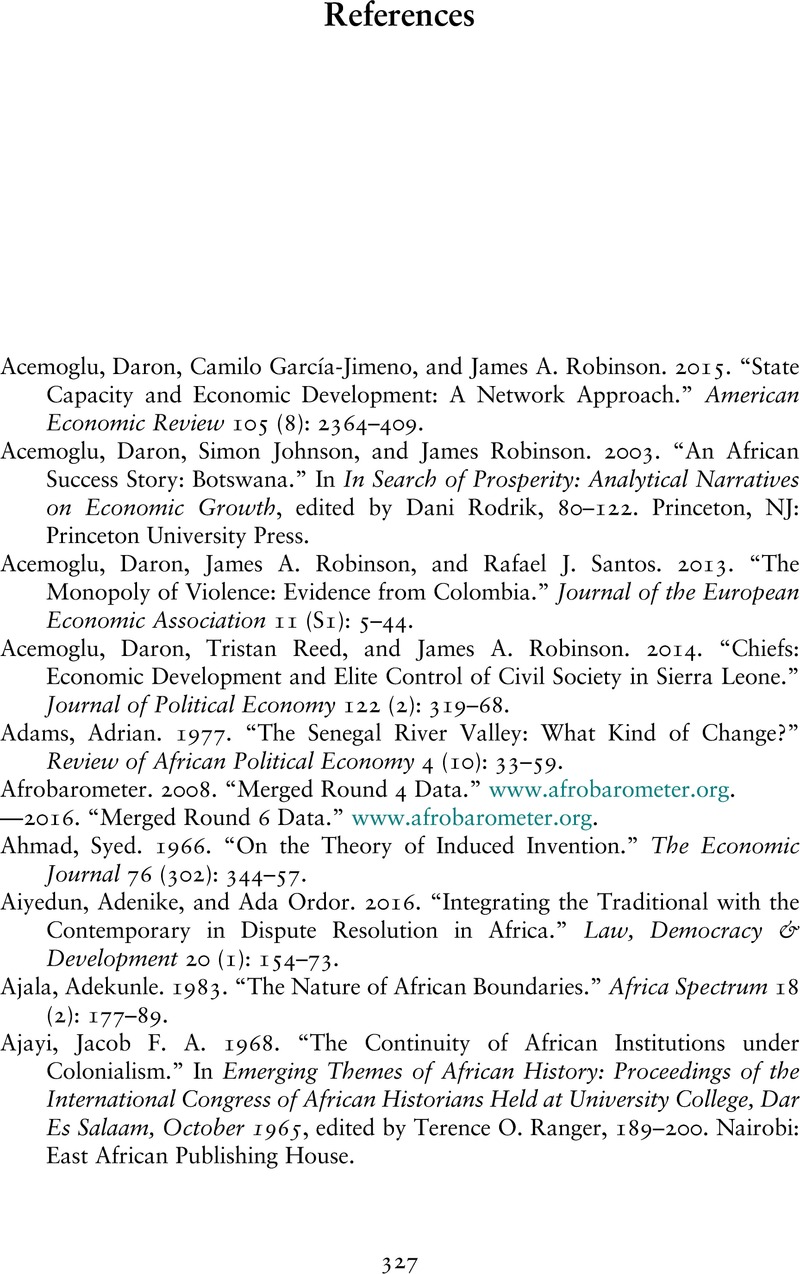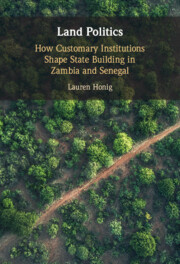Book contents
- Land Politics
- Land Politics
- Copyright page
- Contents
- Figures
- Tables
- Acknowledgments
- 1 Introduction
- 2 Plot by Plot
- 3 Why Institutions Matter
- 4 The Institutional Foundations of Land Authority in Zambia and Senegal
- 5 The Unofficial Differences among Official Chiefs in Zambia
- 6 Holding Ground in Senegal
- 7 Exit or Engagement
- 8 Conclusion
- Book part
- References
- Index
- References
References
Published online by Cambridge University Press: 11 August 2022
- Land Politics
- Land Politics
- Copyright page
- Contents
- Figures
- Tables
- Acknowledgments
- 1 Introduction
- 2 Plot by Plot
- 3 Why Institutions Matter
- 4 The Institutional Foundations of Land Authority in Zambia and Senegal
- 5 The Unofficial Differences among Official Chiefs in Zambia
- 6 Holding Ground in Senegal
- 7 Exit or Engagement
- 8 Conclusion
- Book part
- References
- Index
- References
Summary

- Type
- Chapter
- Information
- Land PoliticsHow Customary Institutions Shape State Building in Zambia and Senegal, pp. 327 - 352Publisher: Cambridge University PressPrint publication year: 2022

